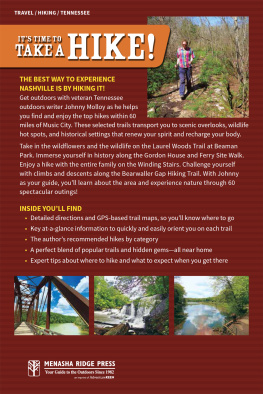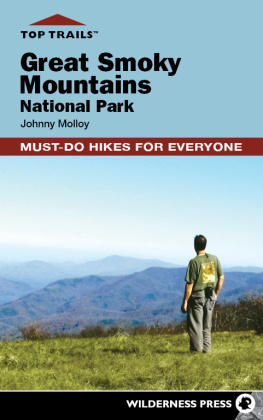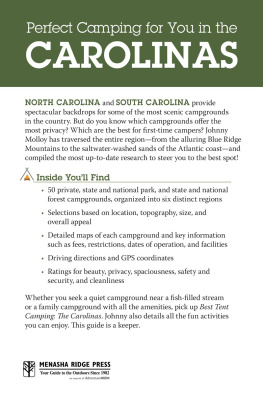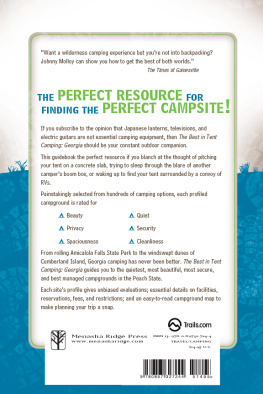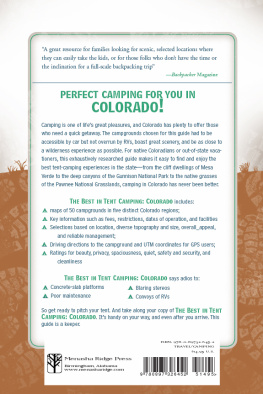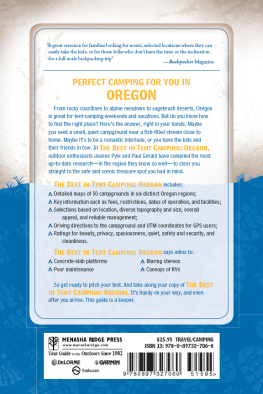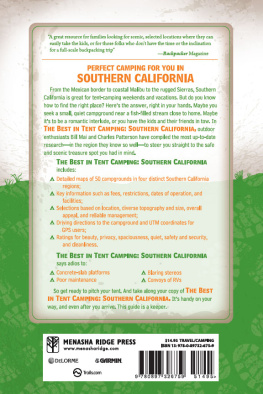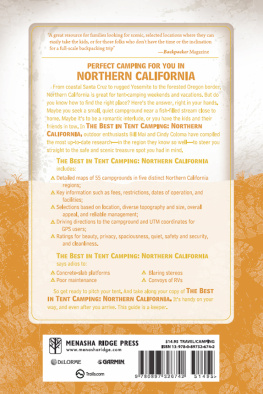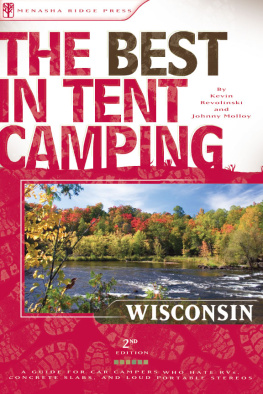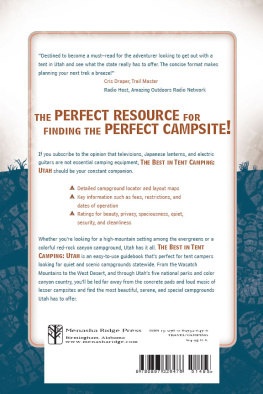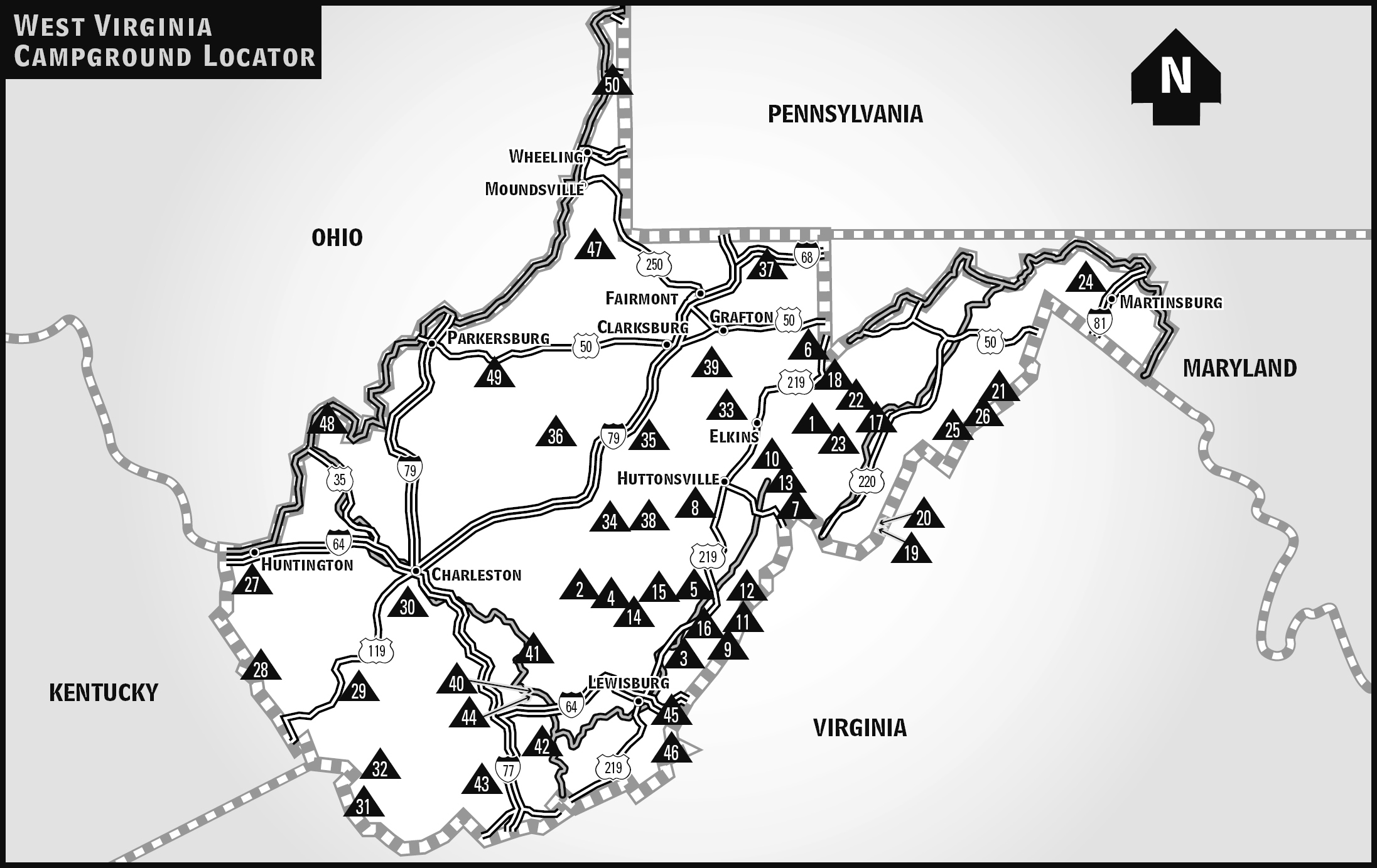I WOULD LIKE TO THANK the following people for helping me in the research and writing of this book: Robert and Bonnie Gross, Roxanna Carr, Roy Reynolds, Jat Hedrick, Anna Galenza at Bulltown, Karen Stokes, Cindy Thomas, Mike Foster, and Cindy Blair. Thanks to Frank Sellars for his information on the New River, and to Stephanie Bailey and Barbara Breshock for getting questioned during their lunch.
Thanks to John Markwell at the Gendarme in Seneca Rocks for his advice about the area. Thanks to Dale A. Porter for his books and information. Thanks to Keith Stinnett, Deal Holcomb, Cisco Meyer, Nelle Molloy, Steele Molloy, and Pat Molloy for the Jeep bailout. And thanks to Mr. DashDave Zaczyk. Thanks to Eureka for providing me with a great tent, the Timberline, for camping; Silva compasses; and Camp Trails for their Daily Grind day pack. Thanks to Caroline Fleischer at Freebairn & Co., and to Slumberjack for a good sleeping bag and sleeping mat to enable a good nights rest. Thanks to Outdoor Outfitters for getting me other equipment I needed.
The biggest thanks of all goes to the people of West Virginia, who love their mountain lands.
PREFACE
W ITH A JEEP, a laptop computer, and an open mind I set forth into the hills of West Virginia. The first trip started in the spring. In southwest Virginia, historic coal country, I came upon my first surprise, Panther State Forest. The place was covered in wildflowers! It started raining the next morning. Such are times that a tent camper has to face. Next I headed up the Ohio River Valley. Amid the development along the waterway, I found other gems such as Tomlinson Run, where the trees of the hilltop campground hadnt begun to leaf out, and I spent a cold night as the sole occupant of the campground.
More trips extended into the summer. As the weather warmed in the lowlands around me, the Alleghenies and lake areas became the places to go. The weather was great and the scenery even better. Getaways like Bulltown, an Army Corps of Engineers preserve, offered a watery place to cool off as well as glimpses into the vast human history of the Mountain State. Other times I headed high into the Monongahela National Forest, to places like Bear Heaven, where on July evenings I donned a jacket and scooted a little closer to the campfire.
The more campgrounds I visited, the more I appreciated the people who operated these preserves. They were hardworking, enthusiastic patrons of their lands. Sometimes a great park staff was saddled with a mediocre campground, and it was disappointing not to be able to include them.
The days began to shortenfall was on its way. There were still more campgrounds to inspect, and I headed down to the New River area. I had rafted the river, as well as the Gauley, in previous years and knew how scenic these gorges were. I enjoyed Glade Creek, part of the New River National Recreation Area, so much, I went back for a second visit, under the guise of making sure it should be in the book.
And with the joy of completing a book and the sadness of an adventure ended, I finished my research. But, not surprisingly, within a month of turning in the manuscript, I returned with a friend to the Dolly Sods for a backpacking trip and to the upper New River for a canoe trip. And so I shall return to the Mountain State for years to come. So will you.
INTRODUCTION
A Word about This Book and West Virginia Tent Camping
W EST VIRGINIA is an unusual state. Born of the Civil War, culled from the Old Dominion, it has been called the northernmost Southern state, or the southernmost northern state. Its nickname is the Mountain State, and mountainous it is. Its been said that if the ridges and peaks of West Virginia were flattened out, it would be the size of Texas. With straight roads and flat lands few and far between, it has the highest average elevation of any state east of the Mississippi River.
I call it the most untapped natural resource in the East. In fact, the entire state of West Virginia deserves to be a National Park. This state is that beautiful. But progress and people came (not always a bad thing) and settled what was then Old Virginia, building lives and communities in hollows along the streams and rivers. West Virginia became a state, and special places began to be set aside for nature to dominate.
Today tent campers can enjoy these parcels, pieces of each distinct region of West Virginia. In Feudin Country, so named after the infamous Hatfield-McCoy quarrels of yesteryear, you can explore the hilliest terrain of the Mountain State, or any other state for that matter. The Ohio River Valley is the land of frontiersmen and native Indians, where history was played out as the human tide swept westward. The New River Gorge is home to one of the continents oldest rivers, which has cut a scenic swath through the ridges of coal country. The Heart of West Virginia is a region of lakes, where numerous reservoirs offer water recreation. The Allegheny Highlands have the highest elevations and most diverse forests, crowned with dark stands of red spruce. The Eastern Panhandle has the drier pine/oak/hickory highlands interspersed with rock outcrops offering scenic views of valleys below.



